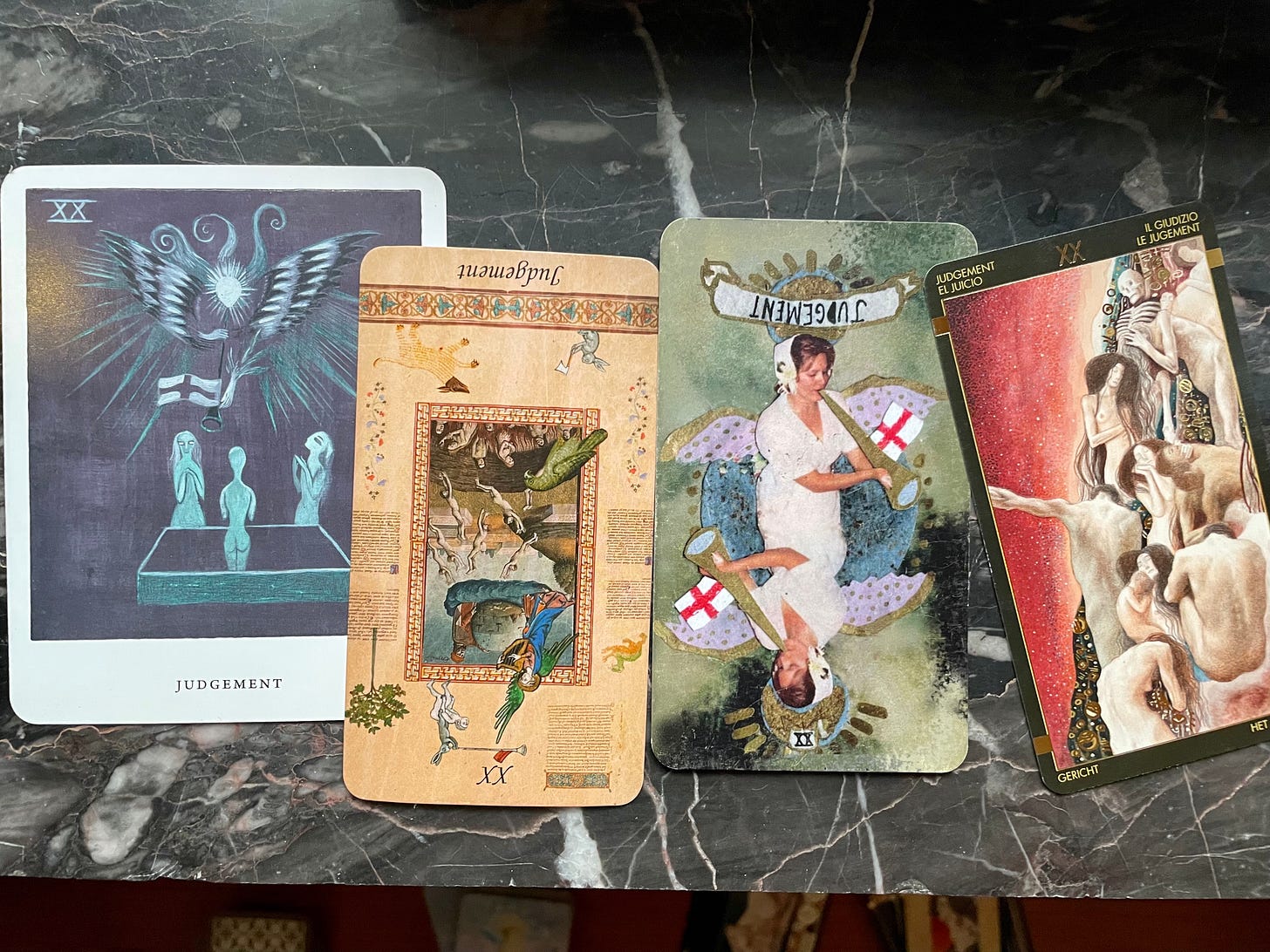I’ve spent years now debating with myself about reversed cards.
If you peruse tarot sites online, you’ll find repositories replete with rich, exciting, and/or ominous prescriptions for what various cards mean upside down: Upright, the Eight of Pentacles means apprenticeship and mastery, proclaims Biddy Tarot, for example: Reversed, the card is an indication of striving toward perfection, but to your own detriment. The Ten of Wands upright indicates an overburdened self, the Labyrinthos site notes, reading the card for career insights, while a reversal of the bent, stick-strapped figure indicates coming relief, even if it’s the kind of reprieve that arrives through burn out and the forced rest of illness.
Meanwhile, a trend in contemporarily published tarot books is to pretend like reversed cards don’t exist at all—or to make shrugging, woo statements about only integrating reversals after you’ve spent a good amount of time (years and years!! is the implication) learning the basics. Robert Place disregards the necessity of reading reversed cards, as does Gordon White. T. Susan Chang reads them as cards that require more work, or more agency on the part of the querent to invoke or to see the energies’ physical shape amongst life’s daily vicissitudes. Jessa Crispin has mentioned that the tarot itself will let a reader know when they’re ready to understand turned cards; Austin Coppock has developed a personal language for specific reversed cards—the Nine of Swords, for him, means “stop worrying, stupid!”

Over the course of the last half-decade, I’ve flip-flopped between both approaches—studiously writing my way into and seeking out what it means that I drew Judgement turned awry for four days in a row, followed by months of just rolling my eyes and flipping the card back around so the image is as “it should be.” (Here’s the kid body rising from the tomb, gray as smoke. Here’s the angel playing her phallic trumpet in the sky, calling up self-knowledge the way a charmer winds up a snake). When I look back over my journals and spreadsheets, though, to see if I can personally discern a difference between what it means for me to draw a card upside down rather than upright, I’ve realized that the answer is every bit as fluid as the ones given by tarotists and writers I’ve mentioned above. There is certainly an essential “core” of the card which will often be present, quite without fail. But reversals can indicate the tension between the external realities announced by a particular tarot draw and the emotional feelings of them.

